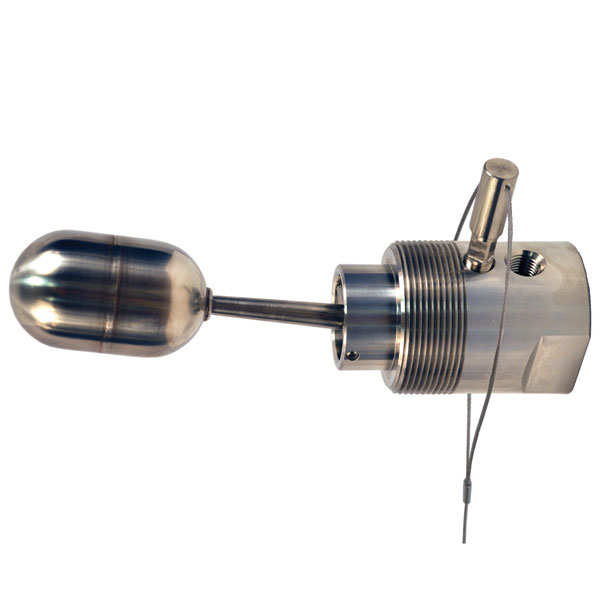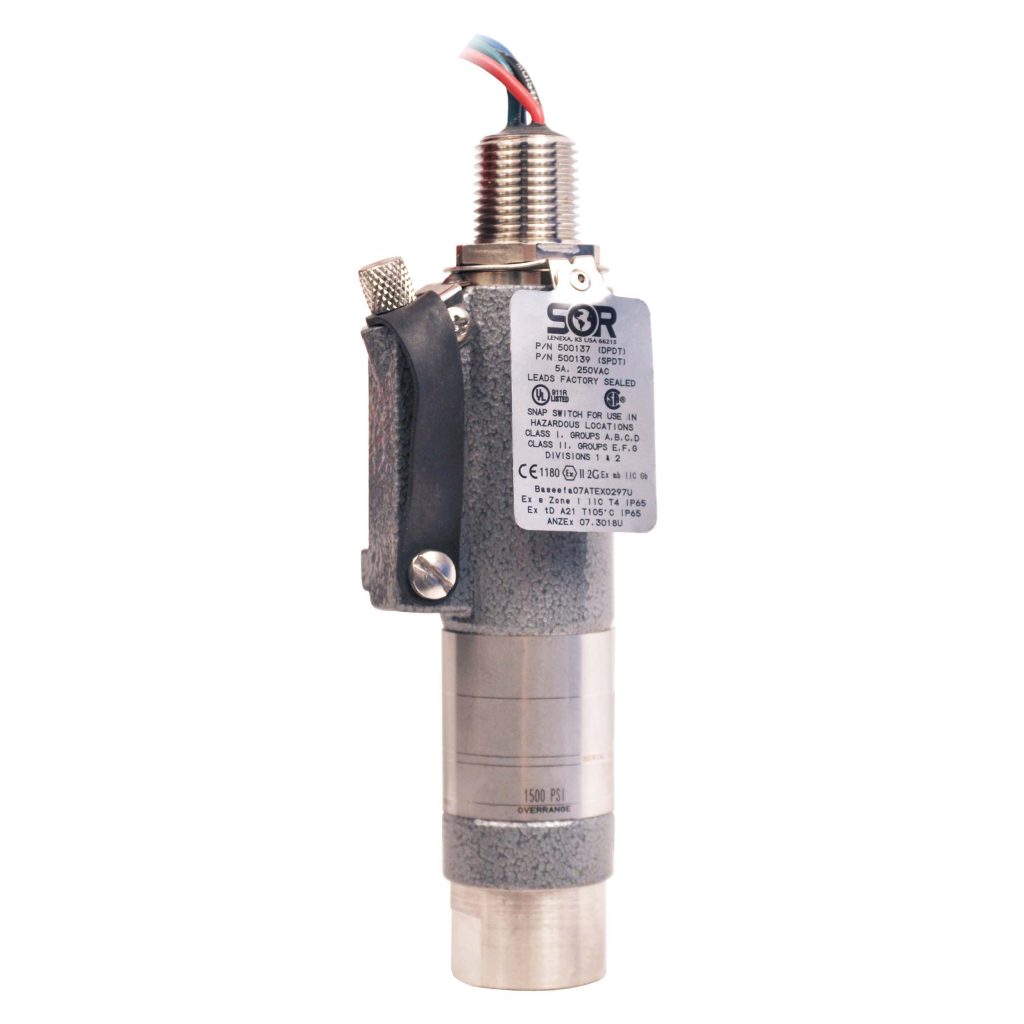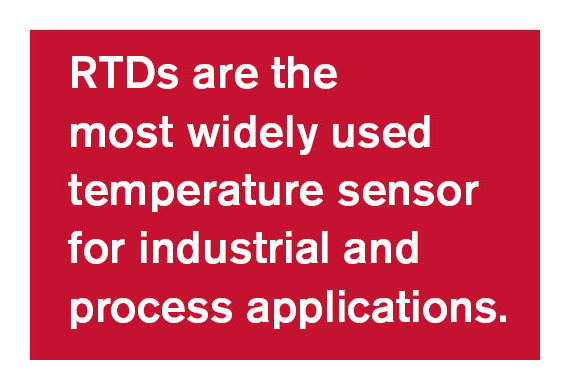
The Modernization of Temperature Measuring Technology
The rapid growth of innovation in the past decade has enabled companies to implement key technologies to monitor, analyze, control, and automate their assets. Wireless resistance temperature detectors, or wireless RTDs, have bridged the gap from decades of hardware to remotely connected devices. This modernization has greatly increased the demand for 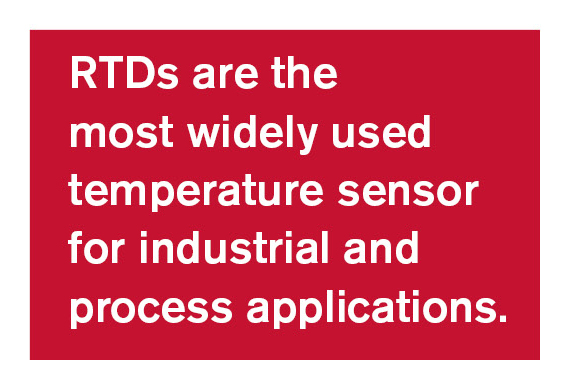 reliable and robust wireless technologies. From transmitting sensors, to gateways and their physical connections, understanding radio frequency (RF) basics and hardware principles is vital for accurate industrial application.
reliable and robust wireless technologies. From transmitting sensors, to gateways and their physical connections, understanding radio frequency (RF) basics and hardware principles is vital for accurate industrial application.
An RTD is a device containing a resistive element where the material’s resistance changes with respect to temperature. The electrical resistance of materials are different at different temperatures. Sometimes referred to as a bulb or sensing element, this relationship is based upon the type of metal used within the resistance source. The most common sensors are platinum based and provide established output curves that work well over a wide range of temperatures. RTDs are known for their stability, linearity, and accuracy. Consequently, RTDs are the most widely used temperature sensor for industrial and process applications.
RTDs Available in Three Configurations
RTDs come in three types of connection configurations: 2-wire, 3-wire, and 4-wire. The basic 2-wire RTD is the most cost effective, but does have performance drawbacks; it does not account for the added resistance from the lead wires on the temperature measurement. Even adding a short section of small diameter nickel lead wires can vastly skew a very accurate 2-wire platinum RTD sensor. This added resistance should be identified for installations that require high accuracy or long connection distances.
2-wire platinum RTD sensor. This added resistance should be identified for installations that require high accuracy or long connection distances.
To compensate for the lead wire resistance, 3-wire RTDs include a third wire that first measures the resistance between the read value wires, measures the resistance between the lead wires, and then subtracts the second from the first. The remaining value is the resistance of the element itself, assuming the lead wires are all the same length and gauge.
Finally, 4-wire configurations provide the most accurate and foolproof connection. The additional wire allows for the creation of a 4-wire Wheatstone bridge circuit. In a true bridge configuration, the fourth wire provides even flow to the wires performing the temperatures sensing while balancing and removing the inequalities of the lead wires. This filtering allows for inequalities such as uneven lead lengths, mixed wire gauges, and dissimilar ambient conditions among the lead wires. On the other hand, the one disadvantage of using 4-wire RTDs is that one more extension wire is needed. For long-length connections runs this additional wire cost may be a small price to pay for accuracy or installation requirements.
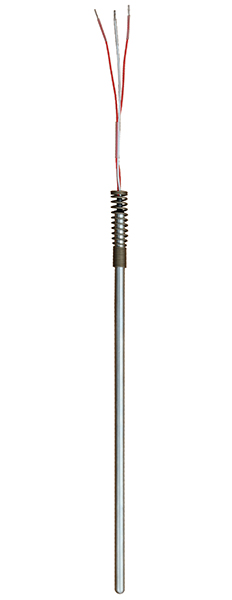 Three-wire RTDs Most Commonly Used
Three-wire RTDs Most Commonly Used
Outside of these unique circumstances, 3-wire RTDs have become the industry standard. They provide repeatable accuracy that meets industrial needs and is the most economical RTD configuration. They are used in a variety of industrial applications and processes, especially in chemical refineries and petrochemical plants where temperature monitoring and control is of extreme importance. As a general rule of thumb, standard-construction industrial RTDs can be usable for both cryogenic applications as well as higher temperatures up to 1200°F. .
Wireless RTDs Present Cost Savings
Even with the vast selection of performance capabilities and price points for wired sensors, engineering teams have been challenged to continually reduce the total operating and installed cost for temperature sensing projects. Sustained lower commodity prices have pushed oil and gas companies to drive performance and productivity of those devices to the next level of efficiency. One major area for cost reduction is eliminating the need for long or complicated wired connections. The larger cost to physically install RTDs are the associated burden of the conduit, cable trays, welding & fabrication, painting,  and insulation. Depending on the geographical region, it has been estimated these additional costs can total up to $25-$45 per foot of installed RTD, which is not including the cost of the sensor itself. An obvious solution to reduce associated wiring cost is by changing to wireless RTDs. This offers a hybrid approach combining both the traditional hardwired options as well as the wireless remote capabilities. Early adopters of this emerging technology have laid the foundation for future cost savings by taking the first steps toward enhanced productivity.
and insulation. Depending on the geographical region, it has been estimated these additional costs can total up to $25-$45 per foot of installed RTD, which is not including the cost of the sensor itself. An obvious solution to reduce associated wiring cost is by changing to wireless RTDs. This offers a hybrid approach combining both the traditional hardwired options as well as the wireless remote capabilities. Early adopters of this emerging technology have laid the foundation for future cost savings by taking the first steps toward enhanced productivity.
Wireless RTDs are Gradually Being Accepted
Wireless RTDs are not a new concept, however, their adoption is far from widespread; legacy plants and processing facilities were built prior to the wireless transformation of recent years. Currently wireless RTDs are being implemented whenever upgrades are scheduled or when a spot-specific solution is required. That being said, there are nearly 100,000 wireless RTDs deployed in industrial applications worldwide. And while wireless technology is becoming a more integral part of our everyday, lives the technology itself is not fully understood.
At their core, wireless transmissions are radio frequency signals which are emitted by an antenna on the transmitting end of one device and received by another antenna on the receiving end of a different device. The data contents is first modulated by varying properties of the signal, allowing the data contents to be physically transmitted. The signal is picked up by the antenna and then demodulated to recover the information contents after being received. The characteristics of the wireless signal are governed by the frequency, wavelength, and amplitude.
Frequency ranges, or bands, are controlled by regulatory bodies unique to each country that dictate what specific purpose each band of frequencies can be used for and where their use is allowed. In the United States, the Federal Communications Commission (FCC) reserved the Industrial, Scientific, and Medical (ISM) band which provides a license free operation in the 900 MHz, 2.4 GHz, and 5.8 GHz ranges. A common example of an ISM frequency is Wi-Fi which uses both the 2.4 GHz and 5.8 GHz bands. Other countries will vary, but most have an allocated ISM band or bands of their own.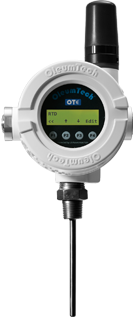
The wireless signal’s shape is characterized as a wave, and as such, wavelength is simply the distance between the cycle starting point and the starting point of the next cycle. It is also inversely proportional to the signal’s frequency as described in the prior paragraph. The higher the frequency, the shorter the wavelength. Conversely, the lower the frequency, the longer the wavelength. Knowing the frequency allows for calculation of the wavelength by dividing the frequency by the speed at which RF signals travel. RF signals are a type of electromagnetic radiation which all travel at the speed of light or 299,792,458 meters per second, which is rounded up to 300,000,000 meters per second. Thus, if a wireless transmission has a 2.4GHz frequency, the corresponding wavelength is 12.5 cm or approximately 4.9 inches.
The final characteristic is amplitude. Amplitude is the peak height of the wave and is a function of power; the larger the amplitude or output power, the higher the wave’s peak. Almost all of the technologies being deployed in the wireless sensor field have fully adjustable output power allowing the signal’s amplitude to be adjusted too.
Wireless RTDs Provide More Flexibility
This combination of proven hardwired RTD performance with the unparalleled flexibility of wireless solutions has culminated in both cost savings benefits and the creation of wireless platforms allowing for future smart device connectivity. Wireless technology has become more robust and customers are no longer limited to a singular band that might be congested by Wi-Fi of other sensors. Wireless RTDs certified for hazardous and nonhazardous environments and made for both 900 MHz and 2.4 GHz frequency spectrums, provide end users with the freedom to select what works best for their unique application. The overwhelming proliferation of embedded sensors and connected devices has opened up unprecedented visibility into operations and process measuring. These sensors open up the possibility for new practices, procedures or workflows that facilitate increased automation efficiency.
 Stephen Drake PhD, Research & Development Manager of Testing – Thermon Inc
Stephen Drake PhD, Research & Development Manager of Testing – Thermon Inc
Stephen Drake graduated with a Doctorate from the University of Texas at Arlington, a Master of Science from Texas A&M University, and a Bachelor of Science from Texas Christian University in Mechanical Engineering. Stephen has also done post graduate work in Business Administration at Wake Forest University. Stephen has presented and published numerous articles on the Thermal Characterization of Renewable Energy Storage. Stephen has previous worked in the Defense Industry planning and installing Subsea assets and is currently leading a team supporting products for the Oil & Gas markets.
 Michelle Bunte, Vice President of Marketing – SOR Controls Group
Michelle Bunte, Vice President of Marketing – SOR Controls Group
Michelle Bunte graduated from Kansas State University with a Bachelor of Science in Journalism and Mass Communications and holds a Master of Business from MidAmerica Nazarene University. Michelle has worked as an Industrial B to B Marketer for more than 30 years and has served as a contributor and panelist for the Measurement Control & Automation Association.
